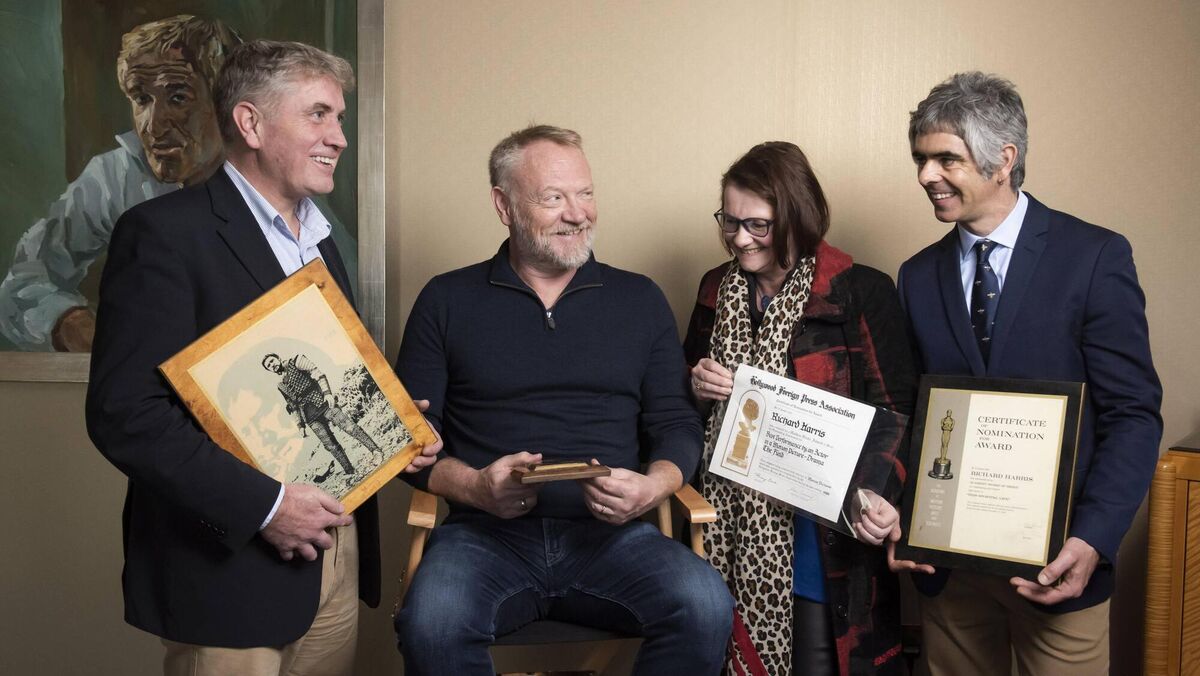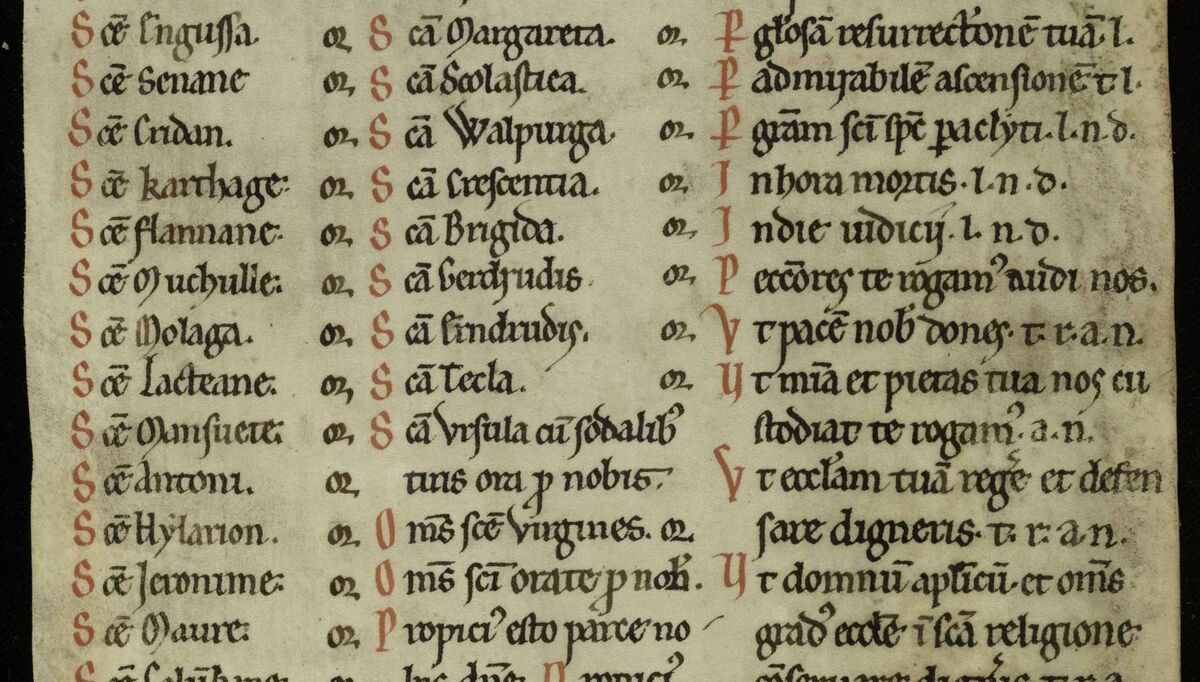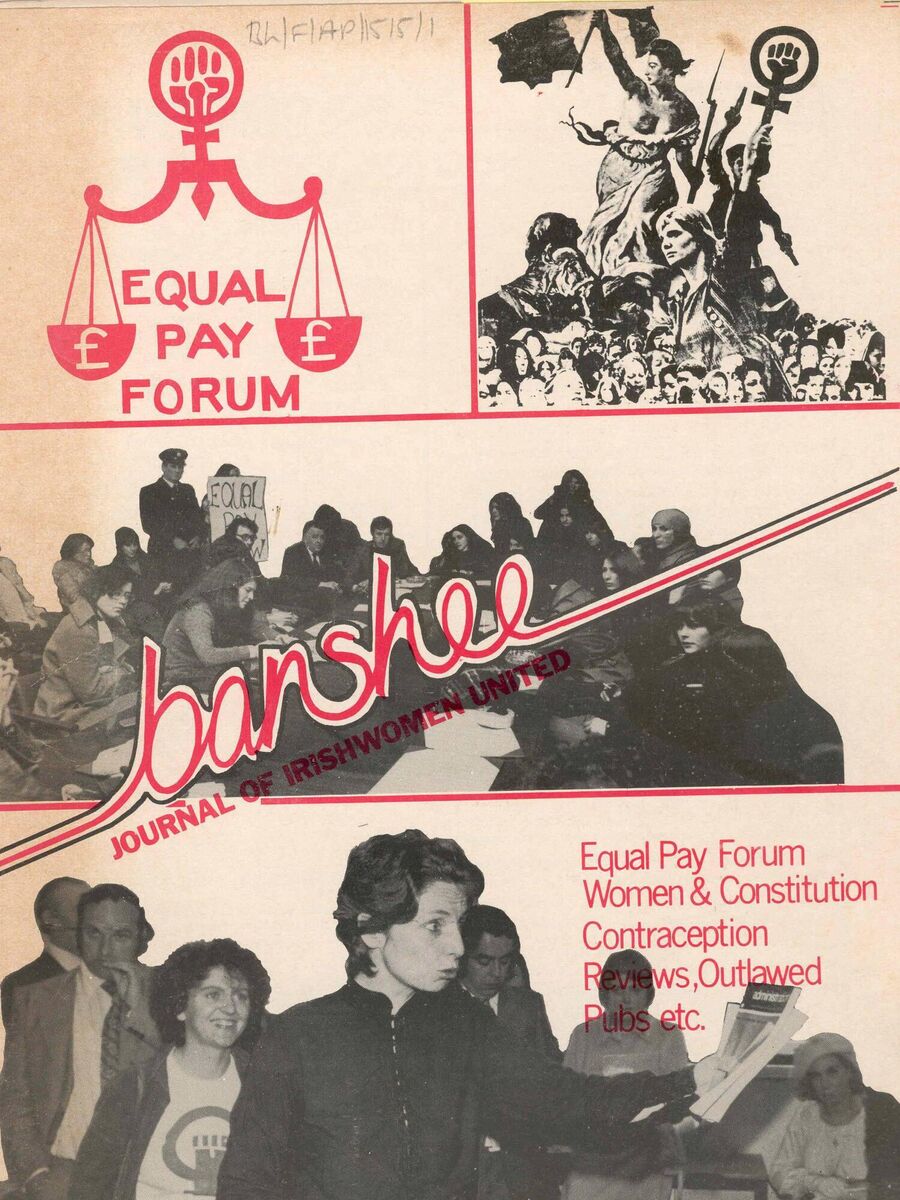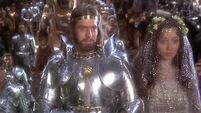Cultural repository: UCC library builds incredible archive collection

Crónán Ó Doibhlin of UCC Library with The Book of Lismore, created in the late 15th century. Picture: Clare Keogh
When the archives of Richard Harris were donated to University College Cork by the late actor’s family, it was headline-making news. The acquisition was a vote of confidence in UCC by the Harris family, with the actor’s son Jared emphasising the fact that the archives would benefit the students of film, music and theatre at the college.
Behind the scenes, a lot of work and effort went into the acquisition, says Crónán Ó Doibhlin, interim university librarian and head of collections at UCC. He estimates that 90% of the material in UCC collections are donated, and the same standards of care and attention apply to all.
“We were in discussion with the Harris family for nearly eight years. It’s a complex process, not just for the university, but for any family handing over what is often quite personal material.
"It’s quite dear and precious to them, you don’t have to be a famous or well-known person for that to be the case,” he says.

Far from the stereotype of archives languishing on dusty shelves in basements, Ó Doibhlin says the aim is that the university’s collections are accessible and useful.
“We work really hard with donors to ensure that they understand the context of the university because collections are used here.
"People are going to come and see them, study them, use them in their writing and their publications. They're not being locked away in a vault.
"The Harris collection coming to UCC was based on the way in which the academic community and the university would use the collection in terms of film and theatre studies, as well as music.”
The collections in UCC extend from the earliest manuscripts such as the Book of Lismore, created at Kilbrittain, Co Cork, to the most up-to-date e-journals.
Ó Doibhlin says that in the last 20 years, the library has concentrated much of its collecting on Munster, with a particular focus on the landed estates of the region and its literary and cultural heritage.
“John Fitzgerald [former university librarian] in particular made a really major contribution in terms of securing the Landed Estate Archives of the region.
"Also, in the last 15 years or so, we’ve tried to focus a little bit more on what would be less establishment-type collecting. So, moving into the 21st century, and looking at the communities that wouldn’t normally be represented in large national public institutions.”
The collections are not just for use by academics and researchers.
“All of the collections that come to UCC on the basis that they will be used by the communities within UCC and also the general public. About a third of our readers are ordinary members of the public, they’re not academics. And that role is really important to us,” says Ó Doibhlin.
The library also undertakes outreach support to assist in the preservation of the region’s cultural heritage.
“We would go out and speak to people who need help with their collections, and advise them on how they might look after their collections themselves. There are no strings attached, no obligation for collections to come to UCC.”

In terms of preserving the literary heritage of Cork and beyond, UCC holds many archives related to the famous Cork author Frank O’Connor.
Among these are the Nancy McCarthy collection, featuring correspondence between the writer and McCarthy, an amateur actress from Cork who later became a chemist and a leading figure in the cultural life of the city.
The Joan O’Donovan letters will soon be available as an open collection. The private correspondence between O’Connor and Joan O’Donovan [who were a couple but never married] was donated to the library by their son Oliver.
“The Frank O'Connor collection is a great starting point, but we’re also very conscious of the recent literary heritage of the city, people like John Montague, but also the Irish language poets — we have Liam O’Muirthile’s archive here as well as Micheál Davitt’s.
"The work of that community of poets and writers that were in Cork in the ’60s, ’70s and ’80s is really important.”
The university has also significantly bolstered its photographic collections in recent years, acquiring the archives of influential photographers John Minihan and the New-York based Alen MacWeeney.
“Almost all of our estate collections have a small collection of photographs, some have reasonably significant collections.
"John’s collection coming to UCC was a massive, massive boost. We continue to strategically acquire photographic collections that we feel are best placed in UCC in the context of the region and the research interests here.”
An ongoing challenge in terms of collections is keeping pace with technological changes. Digitising archives requires a huge amount of work and resources.

“Before you can digitise, the collections have to be catalogued. So over the last 20 years, what we’ve tried to do is ensure that every collection is not opened publicly until it’s fully catalogued.
"That creates its own challenges. In terms of digitisation, we have quite a bit of content digitised, seven or eight of our Irish manuscripts, including the Great Book of Ireland [a unique collection of the work of Irish artists and writers likened to a modern-day Book of Kells].”
One of the biggest difficulties is finding a platform that facilitates public access to images as well as allowing the university to properly curate the digital content.
“In the same way that a physical object has to be created, a digital object has to be created as well. And that actually takes a little bit more effort. Believe it or not, we can be fairly certain that a vellum manuscript will be around for 500 years. It is very difficult to know whether my emails will be around in 25 years.
"There’s a whole other level of curation required. We're starting to build some of the infrastructure, but it does take time.”
The earliest and the oldest document in the UCC collections is the Regensburg manuscript fragment, dating from the 12th century. It derives from the Regensburg monastery established by Irish monks in Germany in the 10th-12th centuries.
“This was probably bound inside a printed book. When the manuscript tradition was superseded by print, they would use vellum from manuscripts to stiffen the bindings of printed books and they would incorporate the vellum into the binding.
"This is a fragment that was basically saved because it was in a binding,” says Ó Doibhlin.
“It has a direct connection to Munster because it’s a litany of saints’ names, a large percentage of which are from the Munster region. It is one of our most important items, especially in terms of our European heritage.”

The Cín Lae Uí Mhealláin is an account of the Confederate Wars in Ireland in the mid-17th century, believed to have been written by Turlough O’Mallon.
“It's a really unusual thing because it’s quite small. So it may have been a kind of notebook that was kept by O’Mallon as a kind of an aide memoir on the battlefield. It recounts all kinds of military activity and skirmishes.
"There’s hundreds of place names from the Mid-Ulster area, from south Derry into Armagh and Tyrone. He outlines how people are ‘eating horsemeat at the end of spring, thieving and stealing of dogs and cats, cannibalism, eating the leather of carriages’.
"There’s so little food, the English are essentially burning everything they can get their hands on. If you think of all of the political turmoil, even up to our own time in the North, this document provides an insight back into the middle of the 17th century.”
The Cantwell Yeats collection comprises WB Yeats first editions that were donated by UCC graduate Eamonn Cantwell.
“Eamonn allowed us to keep the collection open, which meant that we could continue to add to it when interesting artefacts became available,” says Ó Doibhlin.
One of these items is a rare document associated with Yeats and his membership of the ‘Golden Dawn’ order, which was devoted to the practice and study of the occult. Yeats wrote a document in an effort to put an end to a dispute within the order.
“The copy that we have was presented by Yeats to his patron at the time, an American businessman called John Quinn and is beautifully placed inside a little purpose-built box.
"We know that Quinn didn't read it himself because the pages are unopened. So we’ve just left it as it is, it’s unopened and we have a facsimile copy if people want to read the text. It is a unique item.”
One of the busiest collections in terms of teaching and research is the Attic Press archive, which was acquired in the the late ’90s and documents the pioneering work of the feminist publishing house and the modern Irish Women’s Movement generally.
“Ireland has changed so much and this collection is very reflective of that. It includes everything from seminars and workshops organised by the women’s movement to campaigns, and obviously the body of work that Attic Press produced as well,” says Ó Doibhlin.
"We’re increasingly looking at collections on the margins like this.”

Coracle Press is another publishing-related collection that is being actively added to. The press was established in 1975 and is run by the US-born artist and writer Erica Van Horn, and her husband Simon Cutts out of their home in the Tipperary hills.
“We would try and collect as much of their printed materials as we can…it is prized by collectors, and in a very short space of time, the prices go through the roof. Their work is so different and unexpected, they don’t have any particular agenda but to be curious about how books work and how literature works.
"So they take on all kinds of different projects. They've donated some of their works as well as sets of their actual typeface text blocks so we can use them in teaching here in the library, which is amazing.”
The Maisie McCarthy collection is an archive of political material relating to the political situation in the North, particularly in the late 1960s and early '70s. McCarthy, who died in 1990, was from the northside of Cork city.
“She had a whole collection of books and pamphlets that her family kept relating to the North when the Troubles were quite severe.
"There is a series of pamphlets brought out by Fr Denis Faul and Fr Raymond Murray documenting the torture and abuse of people who were arrested by the British at that time.
"A lot of these pamphlets at the time were banned, even in the South, because of their subversive nature. With the family’s permission, we have kept the collection open, to add material of this nature relating to the North, and also political material to do with socialist politics in the city.
"Again, these items are highly collectible and quite rare.
"For example, posters relating to the broadcast ban on Sinn Féin, and the hunger strikes, which at the time, would have been all over the place but by their nature were so ephemeral.”


